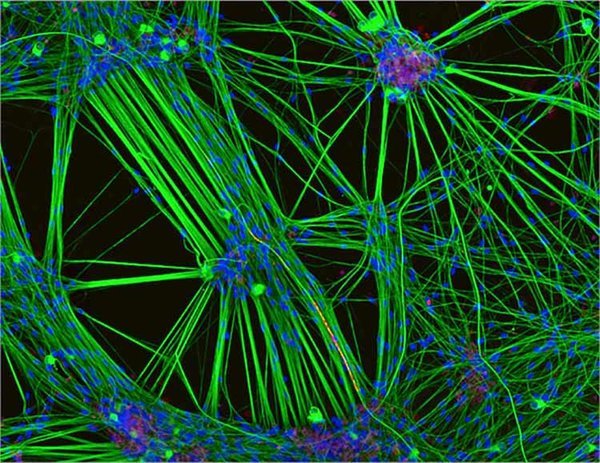Cord blood was offered to treat spinal cord injuries

Rebecca Nutbrown, Nuffield Department of Clinical Neurosciences, Oxford University.
Kazan scientists have shown that the introduction of cord blood cells can cause migration of Schwann cells, which help to restore the transmission of signals between nerve cells, which is impaired due to damage to the spinal cord. The article is published in the journal Stem Cells International.
The authors studied the fundamental mechanisms of the neuroprotective effect of gene-cell therapy in spinal cord trauma. According to scientists, the problem lies in the fact that damage to the spinal cord inevitably leads to the death of not only neurons, but also glial cells, which are an important component of the nervous tissue. In particular, the death of oligodendrocytes leads to destruction of the myelin sheaths (demyelination) and impairment of nerve impulse conduction in intact axons. At the site of the destroyed myelin fibrotic tissue grows, which is unable to conduct nerve impulses, which leads to paresis and paralysis. However, Schwann cells (related to the peripheral nervous system) after trauma to the spinal cord are able to migrate to the area of injury and participate in the formation of myelin, thereby replacing the functions of oligodendrocytes.
"The migration of Schwann cells, in addition to spinal cord injury, can be affected by cellular and gene-cell therapy. In the course of the study, we established a positive effect of the transplantation of cord blood mononuclear cells on the migration potential of Schwann cells and the preservation of peripheral myelin in the area of spinal cord injury. The results obtained can serve as the basis for the creation of a gene-cell preparation for the treatment of not only spinal cord injuries, but also other demyelinating diseases such as Multiple Sclerosis, "said Albert Rizvanov, a professor at the Kazan Federal University, Corresponding Member of the Academy of Sciences of the Republic of Tatarstan.
Previously, KFU scientists suggested using gene-cell therapy for the treatment of spinal cord injuries. To do this, genes that enhance the regenerative potential of cells are delivered to the area of spinal cord injuries with the help of cord blood mononuclear cells.
"In particular, the genes VEGF (vascular endothelial growth factor) and GDNF (glial neurotrophic factor), which have pronounced neuroprotective (protective) and neurotrophic (supporting, nourishing) properties were used in the work. These genes, or rather proteins, whose synthesis they code, are able to protect neurons from damage and to exert a supporting influence on them. Thus, umbilical cord blood cells act as carriers of therapeutic genes, and a kind of mini-bio-factories for the production of recombinant biologically active proteins in the area of trauma.